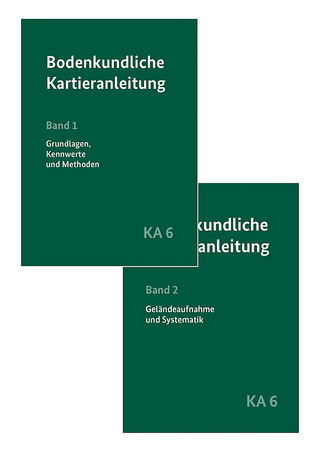
Individual-based Modeling and Ecology
Princeton University Press (Verlag)
978-0-691-09665-0 (ISBN)
- Titel ist leider vergriffen;
keine Neuauflage - Artikel merken
Individual-based models are an exciting and widely used new tool for ecology. These computational models allow scientists to explore the mechanisms through which population and ecosystem ecology arises from how individuals interact with each other and their environment. This book provides the first in-depth treatment of individual-based modeling and its use to develop theoretical understanding of how ecological systems work, an approach the authors call "individual-based ecology."Grimm and Railsback start with a general primer on modeling: how to design models that are as simple as possible while still allowing specific problems to be solved, and how to move efficiently through a cycle of pattern-oriented model design, implementation, and analysis. Next, they address the problems of theory and conceptual framework for individual-based ecology: What is "theory"? That is, how do we develop reusable models of how system dynamics arise from characteristics of individuals? What conceptual framework do we use when the classical differential equation framework no longer applies? An extensive review illustrates the ecological problems that have been addressed with individual-based models.The authors then identify how the mechanics of building and using individual-based models differ from those of traditional science, and provide guidance on formulating, programming, and analyzing models.
This book will be helpful to ecologists interested in modeling, and to other scientists interested in agent-based modeling.
Volker Grimm is a Senior Researcher at the UFZ Centre for Environmental Research Leipzig-Halle and Lecturer at the University of Potsdam. Steven F. Railsback is a consulting scientist and Adjunct Professor of Mathematics at Humboldt State University.
Preface xi Acknowledgments xv PART 1.MODELING 1 Chapter 1. Introduction 3 1.1 Why Individual-based Modeling and Ecology? 3 1.2 Linking Individual Traits and System Complexity: Three Examples 5 1.3 Individual-based Ecology 9 1.4 Early IBMs and Their Research Programs 11 1.5 What Makes a Model an IBM? 13 1.6 Status and Challenges of the Individual-based Approach 15 1.7 Conclusions and Outlook 19 Chapter 2. A Primer to Modeling 22 2.1 Introduction 22 2.2 Heuristics for Modeling 24 2.3 The Modeling Cycle 27 2.4 Summary and Discussion 36 Chapter 3. Pattern-oriented Modeling 38 3.1 Introduction 38 3.2 Why Patterns, and What Are Patterns? 40 3.3 The Tasks of Pattern-oriented Modeling 41 3.4 Discussion 48 PART 2.INDIVIDUAL-BASED ECOLOGY 51 Chapter 4. Theory in Individual-based Ecology 53 4.1 Introduction 53 4.2 Basis for Theory in IBE 55 4.3 Goals of IBE Theory 56 4.4 Theory Structure 58 4.5 Theory Development Cycle 60 4.6 Example: Development of Habitat Selection Theory for Trout 63 4.7 Summary and Discussion 68 Chapter 5. A Conceptual Framework for Designing Individual-based Models 71 5.1 Introduction 71 5.2 Emergence 73 5.3 Adaptive Traits and Behavior 79 5.4 Fitness 84 5.5 Prediction 91 5.6 Interaction 95 5.7 Sensing 98 5.8 Stochasticity 101 5.9 Collectives 105 5.10 Scheduling 109 5.11 Observation 116 5.12 Summary and Conclusions 117 5.13 Conceptual Design Checklist 119 Chapter 6. Examples 122 6.1 Introduction 122 6.2 Group and Social Behavior 125 6.3 Population Dynamics of Social Animals 145 6.4 Movement: Dispersal and Habitat Selection 163 6.5 Regulation of Hypothetical Populations 178 6.6 Comparison with Classical Models 187 6.7 Dynamics of Plant Populations and Communities 199 6.8 Structure of Communities and Ecosystems 218 6.9 Artificially Evolved Traits 234 6.10 Summary and Conclusions 242 PART 3.THE ENGINE ROOM 245 Chapter 7. Formulating Individual-based Models 247 7.1 Introduction 247 7.2 Contents of an IBM Formulation 248 7.3 Formulating an IBM's Spatial Elements 249 7.4 Formulating Logical and Probabilistic Rules 253 7.5 Formulating Adaptive Traits 255 7.6 Controlling Uncertainty 260 7.7 Using Object-oriented Design and Description 262 7.8 Using Mechanistic and Discrete Mathematics 264 7.9 Designing Superindividuals 266 7.10 Summary and Conclusions 269 Chapter 8. Software for Individual-based Models 270 8.1 Introduction 270 8.2 The Importance of Software Design for IBMs 273 8.3 Software Terminology and Concepts 274 8.4 Software Platforms 279 8.5 Software Testing 288 8.6 Moving Software Development Forward 294 8.7 Important Implementation Techniques 301 8.8 Some Favorite Software Myths 306 8.9 Summary and Conclusions 308 Chapter 9. Analyzing Individual-based Models 312 9.1 Introduction 312 9.2 Steps in Analyzing an IBM 313 9.3 General Strategies for Analyzing IBMs 315 9.4 Techniques for Analyzing IBMs 319 9.5 Statistical Analysis 327 9.6 Sensitivity and Uncertainty Analysis 335 9.7 Robustness Analysis 336 9.8 Parameterization 341 9.9 Independent Predictions 345 9.10 Summary and Conclusions 346 Chapter 10. Communicating Individual-based Models and Research 349 10.1 Introduction 349 10.2 Types of IBE Work to Communicate 350 10.3 Complete and Efficient Model Description 351 10.4 Common Review Comments 354 10.5 Visual Communication of Executable Models 356 10.6 Communicating Software 358 10.7 Summary and Conclusions 359 PART 4.CONCLUSIONS AND OUTLOOK 363 Chapter 11. Using Analytical Models in Individual-based Ecology 365 11.1 Introduction 365 11.2 Classifications of Ecological Models 366 11.3 Benefits of Analytical Models 368 11.4 Analytical Approximation of IBMs 369 11.5 Using Analytical Models to Understand and Analyze IBMs 372 11.6 Summary and Discussion 379 Chapter 12. Conclusions and Outlook for Individual-based Ecology 380 12.1 Introduction 380 12.2 Why Do We Need IBE? 381 12.3 How Is IBE Different From Traditional Ecology? 382 12.4 What Can Ecology Contribute to the Science of Complex Systems? 387 12.5 A Visit to the Individual-based Ecology Laboratory 388 Glossary 391 References 395 Index 421
| Erscheint lt. Verlag | 7.8.2005 |
|---|---|
| Reihe/Serie | Princeton Series in Theoretical and Computational Biology |
| Zusatzinfo | 12 halftones. 34 line illus. 3 tables. |
| Verlagsort | New Jersey |
| Sprache | englisch |
| Maße | 152 x 235 mm |
| Gewicht | 482 g |
| Themenwelt | Naturwissenschaften ► Geowissenschaften ► Geografie / Kartografie |
| ISBN-10 | 0-691-09665-1 / 0691096651 |
| ISBN-13 | 978-0-691-09665-0 / 9780691096650 |
| Zustand | Neuware |
| Haben Sie eine Frage zum Produkt? |
aus dem Bereich


